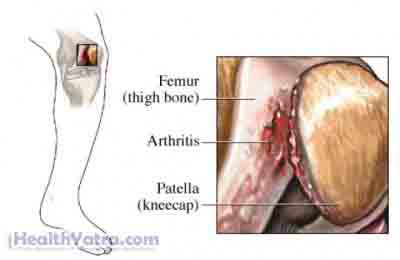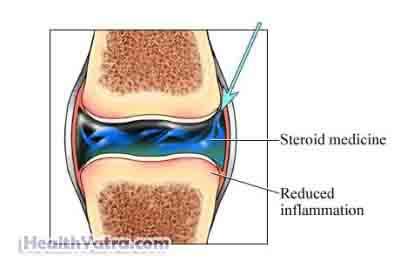Pseudogout Treatment in India
Pseudogout is a type of arthritis that can affect any joint in the body. It occurs when calcium crystals, called calcium pyrophosphates, accumulate in the fluid surrounding joints. The accumulation of these crystals causes inflammation in the cartilage, the material that cushions the bone and allows for smooth joint movement. When this cartilage is weakened, there is swelling and pain in the affected joints, which can lead to chronic disability.
Pseudogout occurs most often in the knees, and can be very debilitating. It can also affect the joints in your wrists, hips, shoulders, elbows, ankles, toes, knuckles, and hands. Pseudogout usually affects only one joint at a time, but may uncommonly affect multiple joints simultaneously.
The condition is called pseudogout (pseudo means false or fake) because it produces symptoms that are similar to gout. However, pseudogout is caused by the deposition of calcium pyrophosphate crystals, and gout is caused by the deposition of uric acid crystals. Gout also has a more severe disease course and often a worse prognosis.
It is important to correctly identify this condition as soon as possible because if left untreated, pseudogout can lead to chronic disability. Pseudogout is a potentially serious condition that requires care from your doctor. The sooner pseudogout is treated, the more favorable the outcome. If you suspect you have this condition, contact your doctor immediately.

का कारण बनता है
Pseudogout occurs when calcium crystals, called calcium pyrophosphates, accumulate in the joints. The accumulation of these crystals causes swelling and pain. This swelling and pain may damage the cartilage in the joint.
It is not known what causes these calcium crystals to form. However, more crystal deposits are seen with advancing age, and genetic factors may play a role.
जोखिम कारक
जोखिम कारक वह है जो किसी बीमारी या स्थिति के होने की संभावना को बढ़ा देता है।
Anyone can develop pseudogout. However, the following factors increase your chances. If you have any of these risk factors, tell your doctor:
- आयु
- Risk increases with age
- Attacks may occur more often and may become more severe with age
- Family members with pseudogout
- Hypothyroidism —an underactive thyroid
- Hemochromatosis —excess iron storage
- Overactive parathyroid gland—one of four endocrine glands situated above or within the thyroid gland that increases the calcium level in the blood
- Hypercalcemia—a condition of too much calcium in the blood
- Kidney failure
- मधुमेह
- Recent surgery—pseudogout sometimes develops after surgery
- Injury—injury to the joint, especially in older people, can trigger release of the calcium crystals
लक्षण
Pseudogout especially affects the knee joints but can also affect joints of the wrists, shoulders, ankles, elbows, and hands.
If you experience any of these symptoms do not assume it is due to pseudogout. These symptoms may be caused by other, less serious health conditions. If you experience any one of them, see your physician.
- Pain or tenderness in joints
- Pain feels like an attack of arthritis
- Very sensitive to pressure
- Stiffness in joints
- Swollen joints that are warm to the touch
- Redness of skin around the joint
Without treatment, attacks of pseudogout can last 5-12 days.
निदान
आपका डॉक्टर आपके लक्षणों और चिकित्सा इतिहास के बारे में पूछेगा, और एक शारीरिक परीक्षण करेगा।
To correctly identify and diagnose pseudogout, your doctor must analyze the type of crystals found in the fluid of the joint affected with pseudogout.
- Joint aspiration—Your doctor may use a needle to remove some of the fluid around the affected joint to determine if the crystals in the fluid are calcium pyrophosphate crystals
- X-ray—Your doctor may also take an x-ray of the affected joint or joints to determine whether calcium crystals are present
- Blood tests—These tests are used to rule out other conditions, such as gout, rheumatoid arthritis, or osteoarthritis, that may be the cause of the swelling and pain in the joints
उपचार
Treatment of pseudogout is a matter of managing the discomfort during active pseudogout episodes. There is no cure for pseudogout and nothing is available to dissolve the crystal deposits that already exist.
Without treatment the pain and discomfort of pseudogout will go away on its own within 5-12 days. However, with treatment, symptoms can be relieved within 24 hours.
अपने चिकित्सक के साथ बात के बारे में सबसे अच्छा उपचार योजना के लिए आप. उपचार के विकल्प में निम्न शामिल हैं:
दवाएं
Decreasing inflammation may slow the advance of joint deterioration.
- Anti-inflammatory medications—(eg, aspirin) are administered to decrease inflammation.
- Nonsteroidal anti-inflammatory drugs (NSAIDs)—(eg, ibuprofen, naproxen, indomethacin) are given to stop painful attacks quickly and to reduce inflammation.
- Corticosteroids—used to decrease inflammation. They may be injected into the affected joint or given as pills.
- Colchicine—another type of anti-inflammatory medicine. Studies have found that colchicine can be used to prevent further attacks.

प्रक्रियाओं
- Cortisone shots —Your doctor may choose to give you a cortisone shot into the affected joint. Cortisone is a powerful anti-inflammatory medication. It is a synthetic (man-made) version of a type of steroid that is produced naturally by a gland in your body called the adrenal gland.
- आर्थ्रोसेंटेसिस —This procedure involves removal of fluid and crystals from the joint through a needle. Removal of the fluid may give you some relief from the pain.
- Surgery —sometimes done to repair or replace any damaged joints.
आराम
It is important for you to protect your joints by giving them a rest.
रोकथाम
There is no known way to prevent pseudogout.
To help reduce your chances of getting pseudogout or to stop the progression of the condition, take the following steps:
- Talk to your doctor about taking an anti-inflammatory medication to prevent the symptoms
- Protect your joints–don’t put extra stress on your joints
- Avoid lifting heavy items
- Lift and carry things properly, using your back, arms, and legs to distribute the weight
- Keep your weight down to avoid putting extra stress on your joints
- Relax your muscles to reduce the pain
